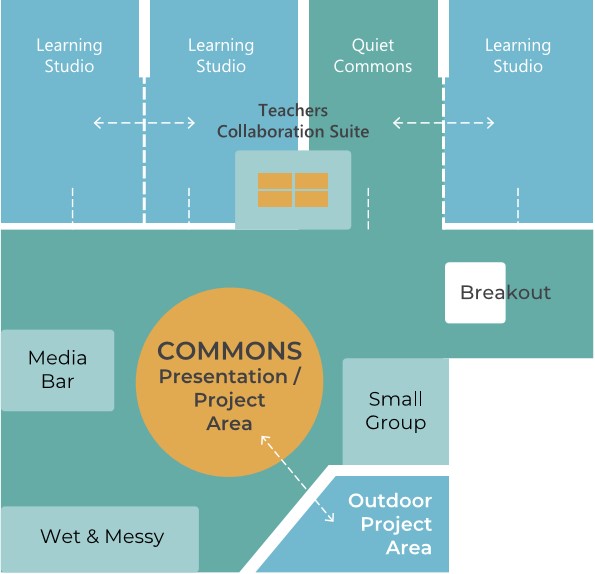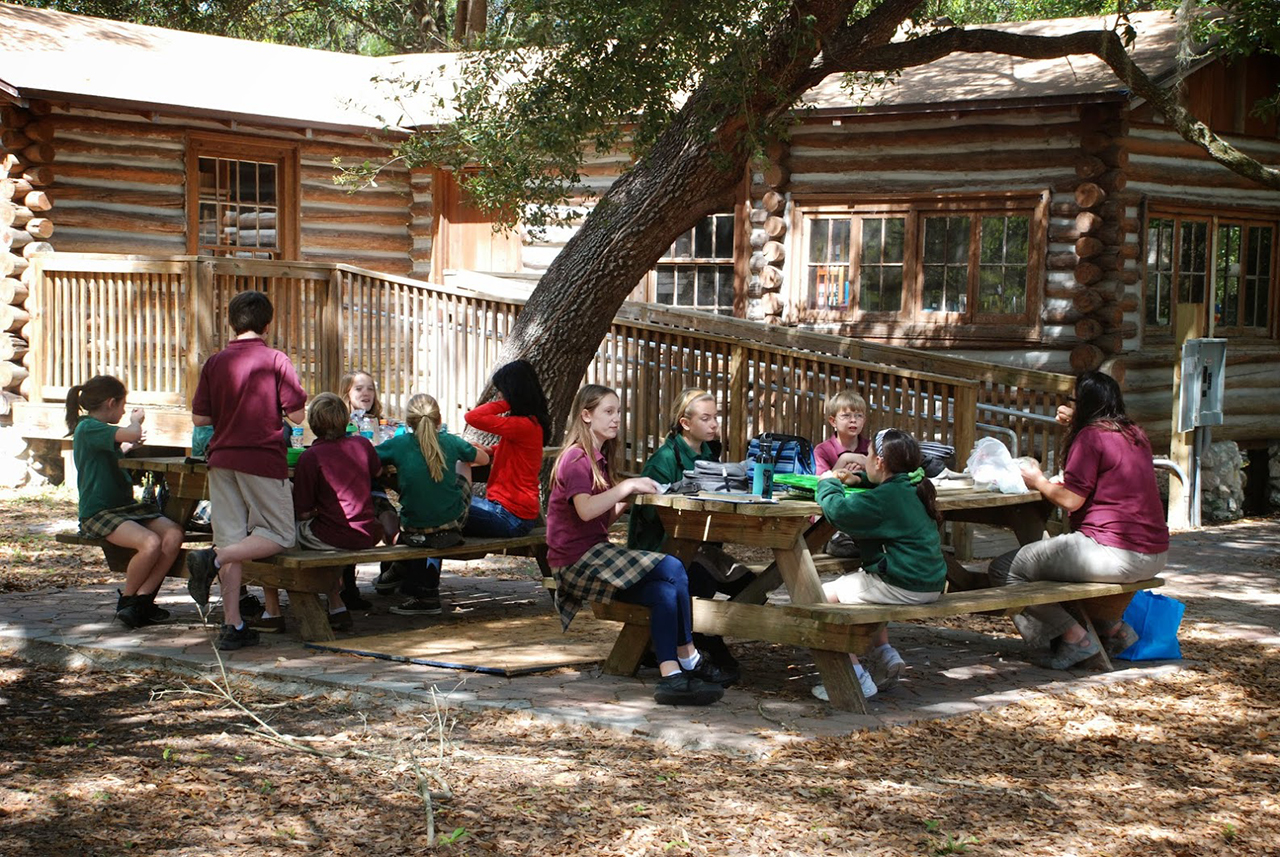
Download a PDF of this blog HERE
A NEW NORMAL NEEDED
There is very little in the way of a silver lining when it comes to the Coronavirus Pandemic that has the whole world in its unrelenting grip. The optimist in us says that, as with everything else, this too shall pass and life will return to some semblance of normal at a point in the not-too-distant future but then we think that “normal” may not be all it is cracked up to be – certainly not when it comes to schools.
Many articles have been penned about what a new normal may look like when this is all said and done. Despite our yearnings for the world that existed but a few weeks ago, there is near consensus that the reverberations of the current crisis will be felt for many years to come. Most also agree the US and global economies ravaged by the near shutdown of so many critical sectors such as business and leisure travel, hospitality, sports, education and entertainment are going to experience permanent shifts that will alter the way we live, learn, work, shop, congregate and socialize.
GOING ONLINE WILL NOT BE ENOUGH
Despite what seems to be the writing on the wall, when it comes to education, the common sentiment seems to be a simple one. Take it online until the crisis passes. Indeed, that is what most schools and colleges are scrambling to do, and we applaud them for their efforts and their commitment to take charge. Even as we write this, our children’s schools are working feverishly to restore in an online world some semblance of the curriculum they would
We are going to experience permanent shifts in the way we live, learn, work, shop, congregate and socialize.
Schools should offer a richer, multi-faceted curriculum that students would not be able to access sitting passively in classrooms or in front of a computer screen at home.
have had to absorb in the physical school that they and their fellow students can no longer access. In practical terms this may mean their schools, along with thousands of others, will carve out a slice of what they deem essential for their students to absorb while they are in lockdown mode. Out of the billions of pages of information, knowledge, tutorials and accredited courses proliferating on the Internet, each school will have to decide precisely what is critical for their students to learn while they are homebound. Overnight, they will have transformed our common understanding of school into something else. They will become curators of knowledge whose expertise and wisdom students will continue to benefit from, albeit from a distance.
Distance learning may “cover” the topics students may have had to learn while attending classes in person but if this all school has to offer, why not just get rid of the physical place called school and make the whole enterprise a virtual one? This is a legitimate question that schools will have to answer when they reopen eventually. Good schools like the ones we refer to later in this essay won’t have a problem with this. For them, school is a place that offers opportunities students could never get at home. While this does relate to the learning environment itself, it goes far beyond that because the places in which students learn also profoundly influences how they learn, with who they learn and also expands the “what” of learning. It allows schools to offer a richer, multifaceted curriculum that students would not be able to access sitting passively in classrooms or in front of a computer screen at home.
Unfortunately, these benefits are not the ones educators are stressing about the return to school. From what we have seen and read, many educators are looking at the Coronavirus crisis simply as a storm to be weathered before they can welcome students back to the familiar and instantly recognizable version of school we have all come to take for granted. They are simply biding time until things can return to “normal”; the routine of students back within familiar and comforting confines, preferably sitting in classrooms under a teacher’s watchful eye while parents breathe a sign of relief and return to their jobs or other child-free daytime activities.
A WAKE-UP CALL FOR EDUCATION
This kind of thinking misses the point which brings us to the main purpose of our essay. The Coronavirus is undoubtedly a global tragedy but, for education, it is also be a loud wake-up call. We now have an opportunity to retool and reenergize schools and schooling so that it looks very different than the place we all learned in with rows upon rows of classrooms, each with one teacher gamely struggling to impart “knowledge” to an increasingly disinterested audience.
A few years ago, Prakash had written a piece in Education Week titled, The Classroom is Obsolete – It is Time for Something New.¹ This wasn’t some rhetorical or theoretical argument. The article presented to its readers what we had been quietly doing across the world since the turn of this century. Working with leaders who also saw the futility of continuing a mass production model of education invented over a hundred years ago, we helped to design and build hundreds of new-paradigm schools across 52 countries. In these schools, the primacy of the classroom gave way to a model where Learning Communities² afforded each student personalized experiences and where teachers, no longer isolated in their walled off boxes, worked with their peers in collaborative groups.
Teachers, no longer isolated in their walled off boxes, work with their peers in collaborative groups.
A book that followed the Education Week article, doubled down on the idea that a new type of school is not just possible, but essential. Blueprint for Education – Redesigning Schools for StudentCentered Learning³ has reached a far bigger audience than the Education Week piece and whole school districts have taken this thinking to heart. Of note is Boulder Valley School District in Colorado that directed much of its $575 million bond referendum money toward the design and construction of Learning Community based schools.⁴
Taking this thinking to a whole new level, we collaborated with Dr. Richard Elmore, Professor Emeritus at Harvard University, to present our ideas in our most recent book titled, Learning by Design – Live | Play | Engage | Create⁵ about what these changes might look like in the schools of tomorrow. This book supplemented Professor Elmore’s Harvard EdX MOOC titled, Leaders of Learning6 that has attracted over 159,000 attendees. In this course, we present the idea that schools can be consciously designed from the ground up to reflect our deepest aspirations as a society.

Let creativity flourish everywhere. Make the whole school a place that students want to be in.
We have included at the end of this write-up a few images that illustrate what new paradigms spaces in schools could look like. These are from schools that have eschewed the “cells and bells” model of education in favor of a more humane system. In this new system, each individual student is recognized as a key member of the community whose physical presence, even more than the content being studied, is the real reason to have school in the first place.
NO MORE A FRINGE MOVEMENT
The schools we have referred to here and the ideas they are based on have remained a “fringe” movement even though their efficacy is widely recognized in academic and business circles as the right way to educate for the future. Now, the Coronavirus Pandemic has given our educators and the educational establishments to which they belong, an opportunity to think and plan with a substantial amount of time to do so – a luxury they never had before. No longer do these new paradigm schools have to represent a fringe movement enjoyed by only a tiny fraction of students. Instead, they can now become mainstream and benefit millions more.
Surreal as this whole experience has been and will continue to remain as it unfolds over the weeks and months ahead, it could also (finally) supplant the predominant model of schooling that we grew up with in favor of one that a new generation of children need and deserve. This goes well beyond the retooling of spaces and curriculum. It is an opportunity to graduate students with a strength of character, critical thinking, problem solving and creative skills that our world desperately needs. The biggest problems facing humanity today cannot be solved by just throwing technology and money at them. These are mainly crises of conscience, morality and equity for which a different way to educate our children is essential. We are not alone in our fervent belief that the emergence of a new kind of school that equips our students to deal with these larger questions will be the lasting and most powerful legacy of the Coronavirus Pandemic.
Notes
¹The Classroom is Obsolete: It’s Time for Something New. Education Week. July 2011
https://www.edweek.org/ew/articles/2011/07/29/37nair.h30.html
²A Learning Community has between 100 and 150 students and four to six teachers working as a team. This group is distributed in an area that contains various spaces to permit up to 19 modalities of learning compared to the two that a typical classroom and corridor model of school is optimized for.
³Blueprint for Tomorrow. Redesigning Schools for Student Centered Learning by Prakash Nair. Harvard Education Press. 2014
https://www.amazon.com/Blueprint-Tomorrow-Redesigning-Student-Centered-Learning/dp/1612507042
⁴The Story of Boulder Valley Schools – A Case Study from the book, Learning by Design by Prakash Nair, Roni Zimmer Doctori and Dr. Richard F. Elmore.
https://learningbydesign.co/case-study
⁵Learning by Design. Live | Play | Engage | Create by Prakash Nair, Roni Zimmer Doctori and Richard F. Elmore. 2019. Education Design Architects.
https://www.amazon.com/Learning-Design-Live-Engage-Create/dp/0976267063
6Leaders of Learning, Harvard edX MOOC 2020 by Richard F. Elmore with Prakash Nair
https://www.edx.org/course/leaders-of-learning
ABOUT THE AUTHORS

Prakash Nair
Prakash Nair is a futurist, an architect, and the Founding President & CEO of Education Design International. He has developed award-winning schools around the world and is the author of three books on school design including Blueprint for Tomorrow published by Harvard Education Press.
Contact him at: Prakash@EducationDesign.com

Roni Zimmer Doctori
Roni Zimmer Doctori is the Principal Architect of Education Design International and heads up the Company’s Israel Studio. She is a visionary architect who brings her 17 years of varied experience to solve complex design challenges with cutting-edge, creative solutions. She is a co-author of the book, Learning by Design. Live | Play | Engage | Create.
Contact her at: Roni@EducationDesign.com
WHAT IS A LEARNING COMMUNITY
This diagram illustrates how a learning community could be laid out. It has no corridors and no typical classrooms. Instead it has learning studios for direct instruction, a large common space, a teacher collaboration suite and various other areas for student-directed learning. Learning communities should be designed for four to six teachers and between 100 to 150 students.

TEACHER & STUDENT-CENTERED LEARNING
Classrooms send a powerful message to students that they are there to listen to and take direction from the teacher. Common and breakout areas (which are unavailable in classrooms) provide the ideal environments for teachers to step aside and let students do their own learning.

EMPOWER STUDENTS IN A LEARNING COMMUNITY
Time and time again, we see that, given a comfortable environment and the opportunity to choose how, what and when to learn, students will take charge and direct their own leaning with a minimal amount of teacher supervision.
Elementary School Students at American Embassy School, New Delhi.
MAKE ROOM FOR CURIOSITY
Children are naturally curious. Create environments and experiences in which they can connect with their innate curiosity and connect with the joy of learning.
Top: Early Childhood at Shorecrest Prep, St. Petersburg, Florida.
Left: 1st Grade at PK Yonge Developmental Research School, University of Florida.
GIVE STUDENTS PLACES THEY CAN MAKE THEIR OWN
Whether it is a senior student center like the one pictured above or a small breakout room like the one on the left, high school students, create places where students feel that they have agency and autonomy in school.
Top: Centaurus High School, Boulder Valley School District, CO.
Left: Bloomfield Hills High School, Michigan.
DIRECT INSTRUCTION DOES NOT ONLY HAPPEN IN CLASSROOM
These images show spaces in our schools that serve many student-centered activities, but they can also be used by teachers guiding students in small groups or individually.
Top: Academy of the Holy Names, Tampa, Florida.
Left: : Anne Frank Inspire Academy, San Antonio, Texas.
DON’T FORGET THE OUTDOORS!
The best classroom is often not a room at all. Design your curriculum so that students have an opportunity to connect with nature and experience the outdoors as an intrinsic part of their schedule. Weather shouldn’t be a concern to stay inside all the time. Properly dressed, there is no time of the year when students aren’t happy to be outside.
BREAK FROM THE NORM!
Here are two spaces that are not typically found in schools. The above space is an “Atelier” – a calm and soothing multi-disciplinary studio for young children. Below is a black box theater that is far more effective as a place for learning than a traditional school auditorium where most of the space is taken up by the seats.
CONTACT US
Education Design International
Email: Info@EducationDesign.com
Web: EducationDesign.com
Tel: +1 800-311-2429

Outdoor café at Learning Gate Community School, Lutz, Florida.
